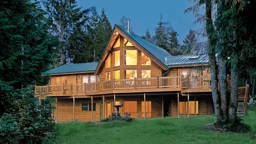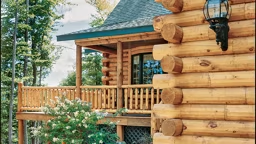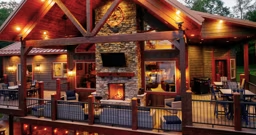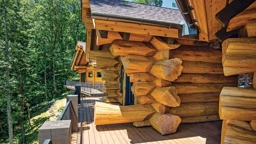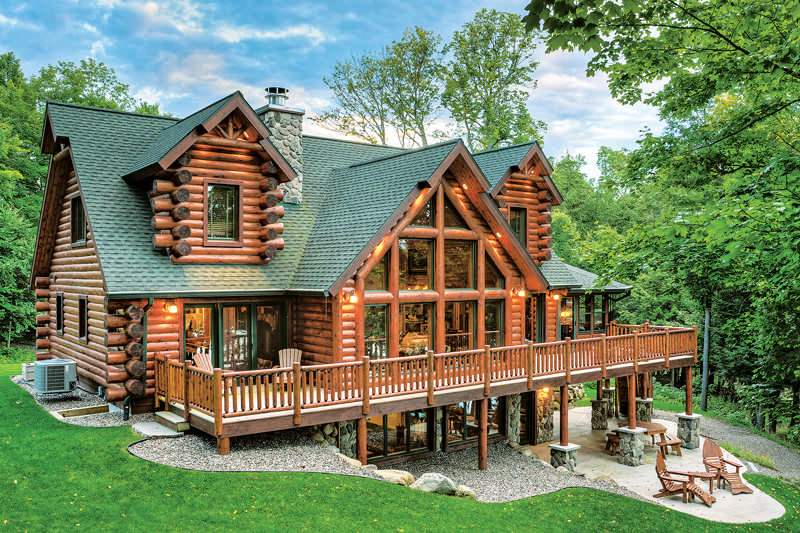
Let us help you make your dream home into a reality. Sign up for our online course to learn the basics of the log and timber home industry, how to find land for your dream home, how to determine your budget and how to select a lender.
Which wood species should I use to build my log home? What is the best type of wood available? Why are there so many different kinds of woods used in the log-home industry? These are often-asked questions of log-home manufacturers and dealers. They are about as easy to answer as, “What is the best car to buy?” or, “What is the best computer available?” The answer is, “It depends on what you want it to do.” One needs to understand that the above questions represent a myriad of possible answers that are dependent on what the buyer wants and needs the wood to do. I hope this information will help you make the choice that’s right for you. There are 80 or more commercial wood species in the United States and Canada that can be and have been used for constructing log structures. These are the most commonly used species because they are readily available and reasonably priced.
East and Northeast:
White pine, red pine, Eastern white cedar.Southeast:
White pine, yellow pine, cypress.Central:
White pine, yellow pine, Eastern white cedar, hardwoods (oak, poplar, walnut).West and Northwest:
Western red cedar, spruce, fir, hemlock, ponderosa and lodgepole pine. Supply-and-demand economic principles apply to log-home manufacturers as they do in any other business. Most manufacturers offer woods that are readily available because they can purchase the raw materials at a reasonable cost. That is one of the reasons most homes are constructed of pine, which is available throughout most of the United States. Some manufacturers offer several different species, many of which are not native to the region in which the companies are located.For example, an East Coast manufacturer offering Western red cedar must purchase the raw material in the Northwest and transport it to the East. This adds freight cost to the raw materials, so a wood species becomes readily available by importing it to the manufacturer’s region, but the price will be affected by transportation costs. Thus, you can expect to pay more for a Western red cedar log-home package than a pine package when dealing with an Eastern manufacturer. All wood species produce natural toxins that help them resist attack from fungi and insects. Some woods are more resistant than others. The degree of resistance is determined by the amount and content of toxins that are present in the wood. When you smell the aroma of wood, you are actually inhaling its naturally produced toxins that make it resistant to fungi and insects. The highest concentration of naturally produced toxins is present in the heartwood. The older the tree, the more concentrated are the toxins. Species containing more heartwood than sapwood are much more naturally resistant. While species containing more sapwood than heartwood are less naturally resistant, they are easier to protect with the use of wood preservatives. Sapwood of all trees has very little to no resistance to insect and decay damage. Heartwood of Western red cedar has the highest natural resistance to fungi and insects. This is due to its low sapwood content, slow growth and high concentration of toxins.
While promoted for their high resistance to insects and decay, Eastern white cedar, cypress and hemlock are far behind in comparison to Western red cedar. It’s best to remember that there are no miracle woods. All wood species that are not pressure treated with non-leaching materials require maintenance application of wood preservatives over their service life to protect against fungi and insects. These include Western red cedar, cypress, redwood—all well-known, highly promoted, naturally resistant wood species. We have all seen or heard of the 200-year-old log structure still in excellent condition. These structures are the exception. For each one still in use, thousands have been destroyed by fungi and insects. These old structures were made from virgin timber with 95 percent or more heartwood. The sapwood was removed by hewing or incising the timbers to fit the building. They also were well designed to freely settle, allowing for shrinkage of the wood timbers. They typically were designed with wide roof overhangs and porches to protect the log walls and most generally had open or well-ventilated foundations. Regular maintenance applications of wood preservatives and sealants over the years, coupled with the fact that the logs were slow-growing virgin timbers with high levels of natural toxins, prevented sufficient moisture to penetrate the wood. This did not allow the wood to become a food supply.
To keep up with demand, much of the wood produced today comes from managed tree farms. It grows more rapidly and is harvested as smaller trees. Because of this short, 50-to-70-year life cycle, these trees do not build the high levels of concentrated natural toxins that exist in trees that are 200 to 300 years old. Be cautious when listening to sales presentations or reading literature about the content of the heartwood in a log. The heart of the tree and the heartwood are not necessarily the same thing. It is possible to have a tree with no heartwood present because it was grown so fast that the pith—the center of the tree—never fully developed. The heart of the tree can be 99 percent sapwood. This is especially cause for concern in shrinkage, as the log will shrink both crosswise (top to bottom) and lengthwise (end to end). To help assure that you build a log structure that will become a future national monument in the 22nd or 23rd century, have your log-home supplier furnish you with a plan that has been engineered for shrinkage and free settling; designed with a wide roof overhang; and has lots of porch area. (Decks keep moisture close to exterior doors, walls and foundation.)
Build on a well-drained and ventilated foundation. More important than which wood to choose or how it is dried is how that wood is assembled when you build your home. In constructing a stick house, you have five opportunities to prevent air infiltration through the wall. In constructing a log wall, you have this opportunity each time you permanently fix a log in place. You should strive to do it only once by doing it right the first time.
Fletcher Parsons received his forestry degree from West Virginia University in 1950. Now retired, he is the majority owner of Appalachian Log Structures Inc.




